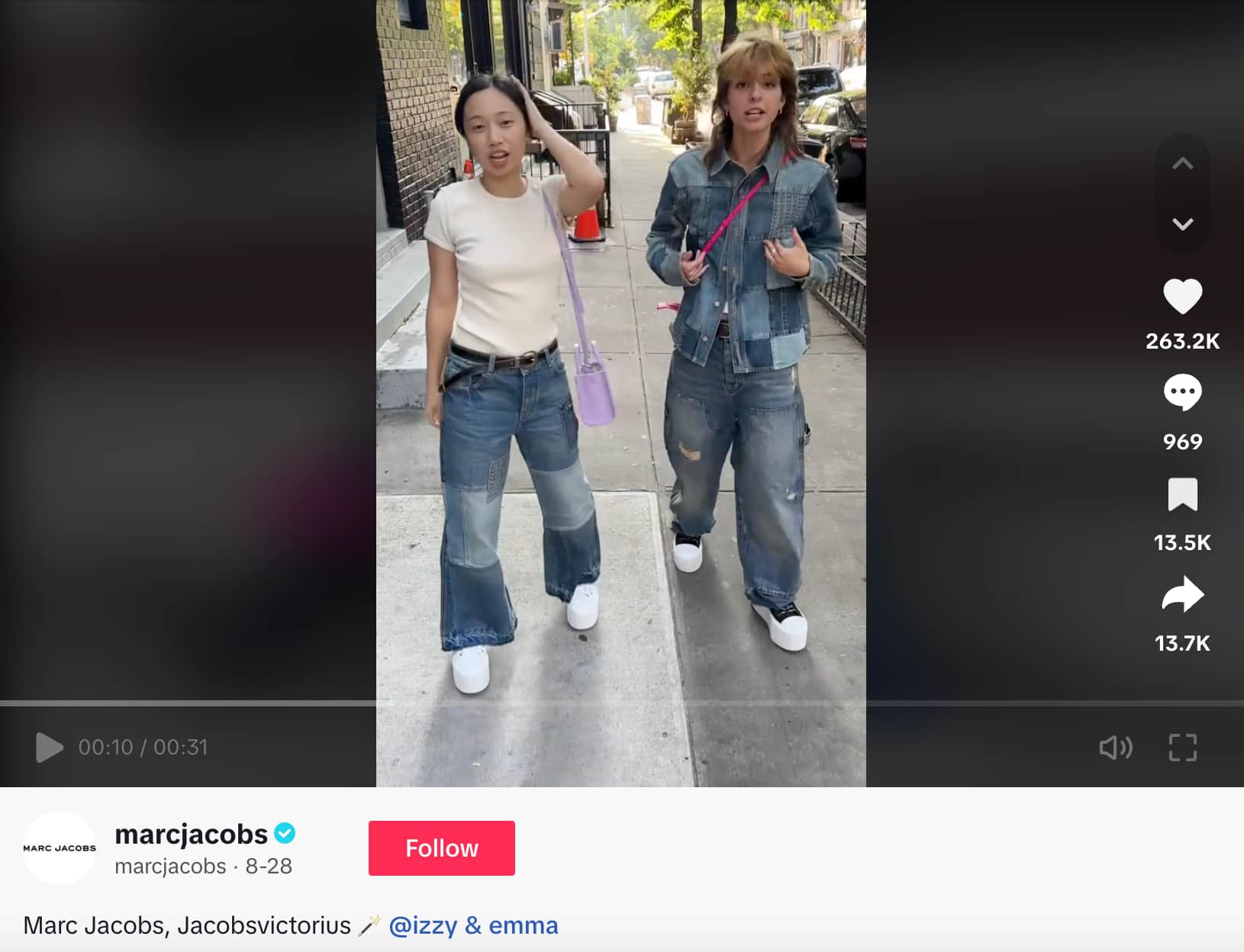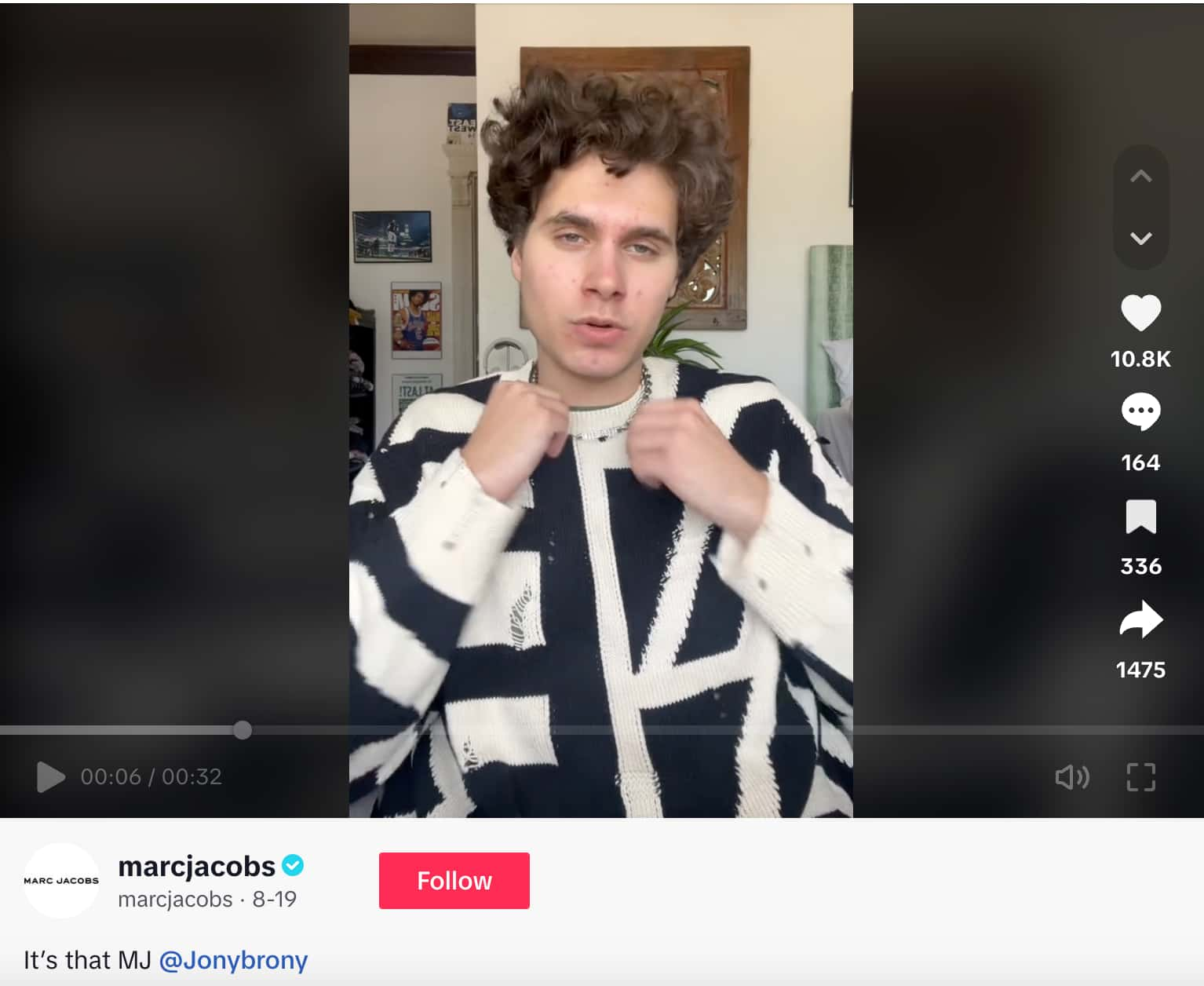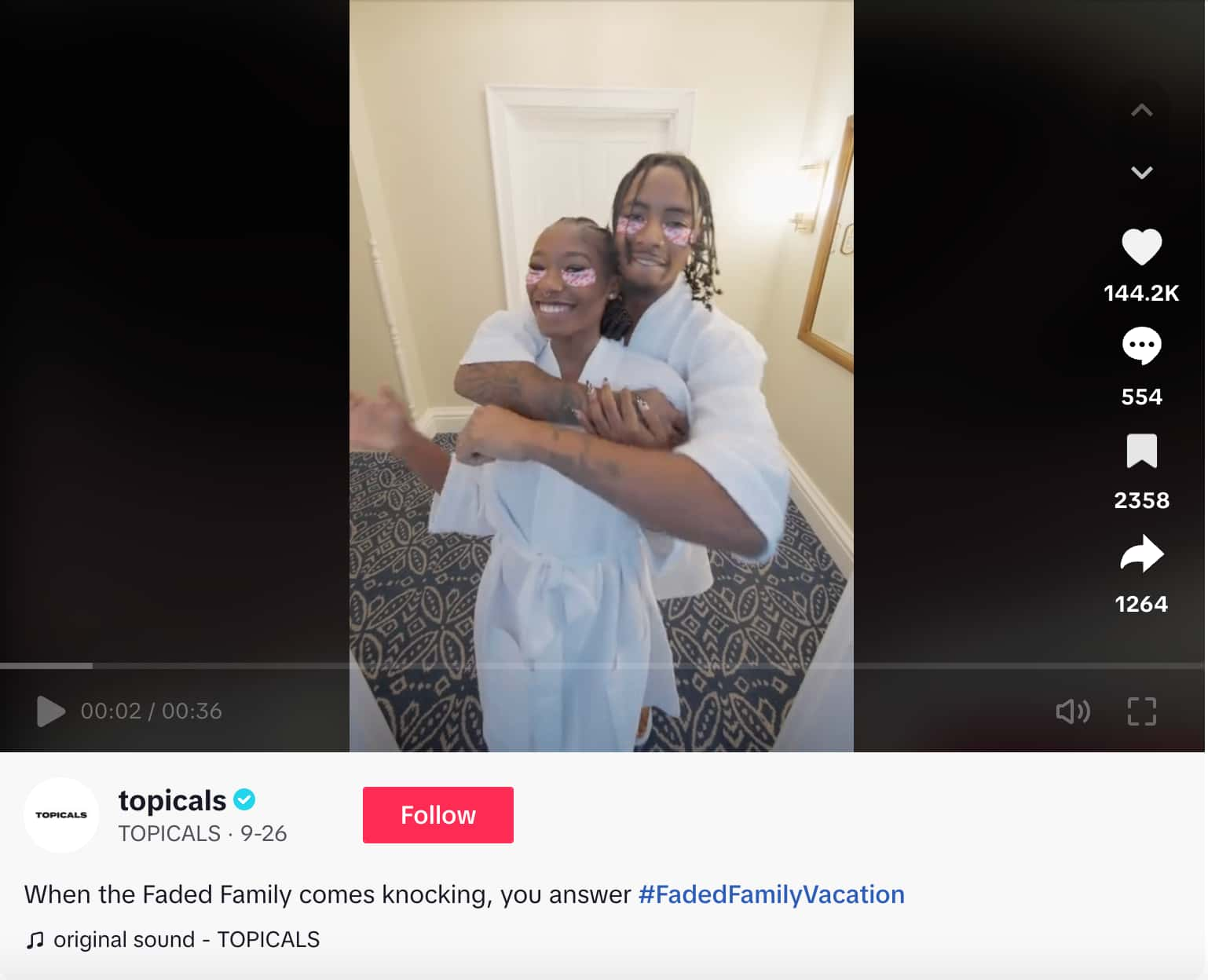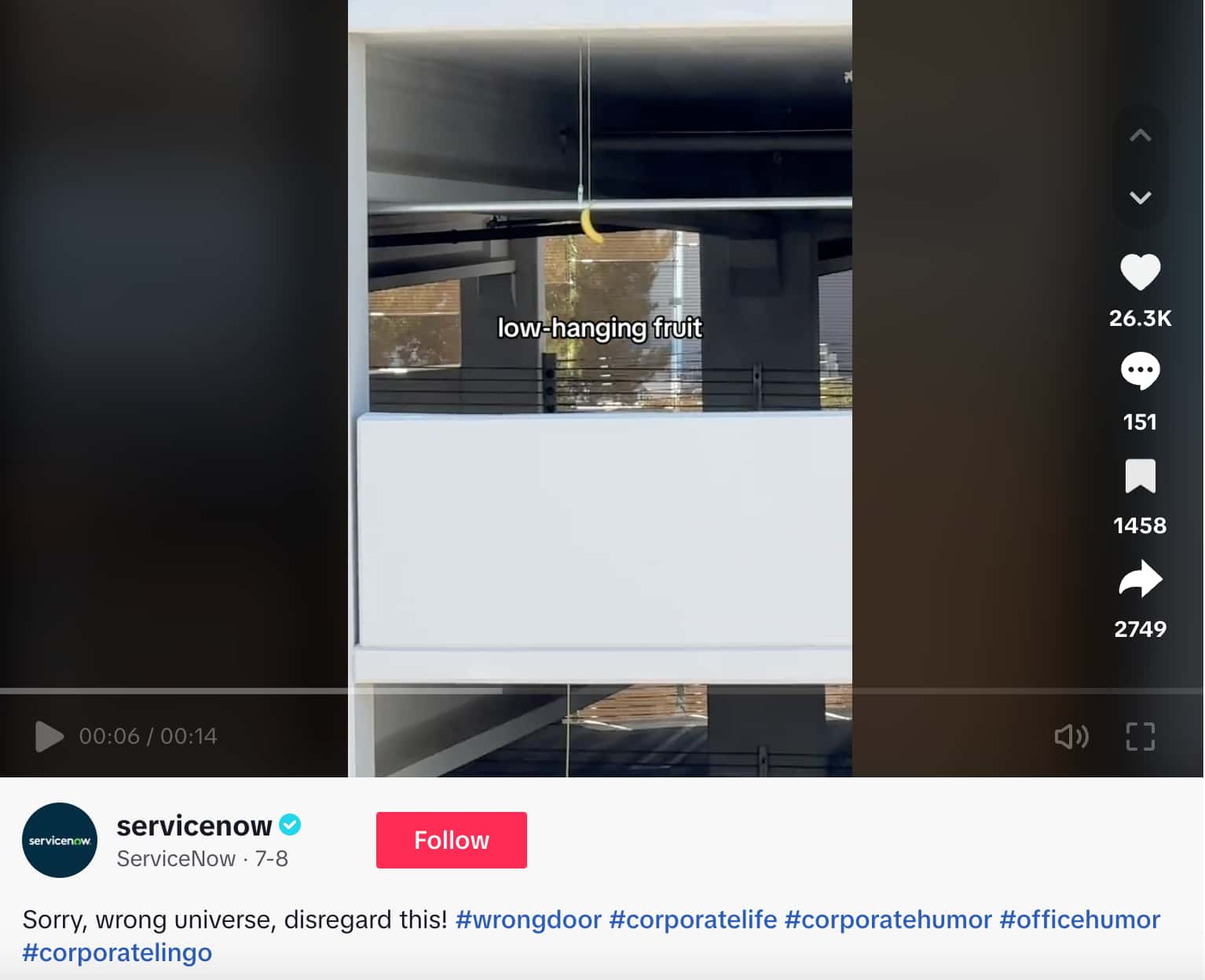How Gen Z uses social media and what that means for brands

Table of Contents
Before the 1960s, young people were seen as an undesirable marketing audience and mostly ignored. Everything changed with Baby Boomers. They were the largest and most influential generation in the history of modern consumerism, yet their social movements and corporate distrust confounded advertisers who had to completely rethink their playbooks. Sound familiar?
Since then, marketers have been trying to reach a revolving door of youth generations—from Boomers to Gen X to Millennials, and now Zoomers and Gen Alpha. Reaching young people and penetrating trend culture has become a consistent hurdle.
Casey Lewis, social media consultant, author behind the After School newsletter and expert of social trends among younger audiences, sums it up like this: “Any brand not actively trying to reach Gen Z and Gen Alpha is doing themselves a disservice. Even if you don’t care to be in the zeitgeist. They are our future consumers, so you need to have them in mind—even if you’re not trying to reach them today.”
After decades of consistently marketing to young people, marketers are again mystified by a new generation. Like Boomers before them, Gen Z represents a new kind of consumer: digital natives who are increasingly cynical, driven by ethical causes and are chronically online (or are they?) They are more discerning than their predecessors, which frustrates marketers trying to obsessively crack the code on how to effectively reach them without seeming indubitably cringe.
In this guide, we explain how Gen Z wants brands to show up on social media and what it takes to market to them the right way.
Gen Z social media usage
Gen Z has never known a world without social media or the internet. It’s enmeshed in their daily lives and serves as their go-to channel for information—even beating out popular search engines. When we asked Lewis how she would describe the way Gen Z uses social, she responded, “A better question is how don’t they use social? They use it for everything and they expect brands to use it for everything, too—from customer service to commerce, discovery to community.”
Data backs this up. Compared to other generations, Gen Z is most likely to use social for discovering new products, keeping up with the news and reaching out to brands with customer care needs, according to the Q1 2024 Sprout Pulse Survey.
Let’s break down which platforms occupy most of their time online and the types of content they engage with there.
Which platforms does Gen Z use and why?
According to The 2025 Sprout Social Index™, 89% of Gen Z social media users are on Instagram, 84% are on YouTube and another 82% are on TikTok, making these platforms the most popular for Zoomers. Gen Z is most likely to use both channels for entertainment and connecting with friends and family.
Digging deeper into how they use certain platforms, Gen Z consumers report TikTok is their favorite channel to turn to for product discovery, closely followed by Instagram, according to The 2024 Social Media Content Strategy Report. The same research found that they are also most likely to use TikTok and Instagram for staying up to date on the news, and Instagram for customer care.

What brand content does Gen Z engage with?
On their top two most-used channels, Instagram and YouTube, Gen Z is most likely to engage with brand posts that include video or static images, per The 2024 Social Media Content Strategy Report. On YouTube specifically, they’re looking for long-form content (over 60 seconds) and brand-influencer collaborations.
Lewis suggests all these channels and formats could be interconnected. “We all have short attention spans to go along with our preference for short-form video. But it’s interesting to see Gen Z podcasters uploading one to two hour-long episodes. Then they slice and dice, and upload videos across short-form platforms.”


Though Gen Z ultimately consumes all content on most platforms, the key is understanding the nuance and culture of each platform. That doesn’t mean completely recreating posts from scratch—and overtaxing your team’s bandwidth. It means, as Lewis illustrates, charting multiple points of distribution and connection, and prioritizing the platforms that matter most to this generation.
Regardless of format, the characteristics Gen Z cares about most in brand content are authenticity, entertainment and reliability, according to Index data. Brands that go for unhinged marketing strategies only succeed when it aligns with who they are offline. Compared to all other generations, Gen Z is also most likely to favor brands that prioritize direct engagement with their audiences—whether it’s resharing posts, responding to questions or jumping into the comments section. The bottom line? What you publish matters, but for younger generations, how you interact is just as important.
Gen Z social media trends
Upfront warning: This is not a trends listicle that will inspire specific content ideas (for that read our top social media trends article).
As Gen Z has matured (the oldest members of the generation are in their late 20s) and they’ve spent more time under marketers’ microscope, throughlines have emerged that give us insight into how they think about social and its future. Brands are beginning to understand that keeping up with a lightning pace trend culture is not the key to their lasting loyalty, and Gen Z consumers want a break from being chronically online too (kind of).
These trends map out the future of Gen Z’s social media habits, and give clues that reveal what it takes to build lasting brand resonance.

Growing trust in influencers and creators
According to The 2024 Influencer Marketing Report, influencer trust is holding steady but growing in some pockets—especially among young consumers. Nearly 40% of Gen Z consumers trust influencers more than they did a year ago.
Compared to every other age group, Gen Z is also most likely to say influencer content has the most impact on their decision to buy a new product or service. Younger consumers are acutely aware of the role influencers play in today’s customer journey, looking to creators not only for entertainment but for genuine recommendations.
As the influencer economy continues to grow, Gen Z will certainly continue to expect (and favor) brands that partner with influencers in unique ways. For brands to make their investments count, they need to find influencers with credibility in niche communities who are real fans of their brand.
To build these strategic partnerships, it helps to understand the creator side of the equation. Gen Z creators are increasingly professionalizing their craft, building businesses around their influence. Understanding how they approach monetization, what tools they rely on, and how they structure partnerships can help brands identify the right collaborators and create mutually beneficial relationships.
Disheartened by most brand-led activism
The surge of brands putting out “activist” content in the last five years largely backfired—especially with discerning Zoomers. Many brands were accused of getting it wrong, overwhelming their audiences or performing to bolster the bottom line.
Sprout’s 2019 #BrandsGetReal Report found that 70% of consumers then believed it was important for brands to have a public stance on social and political issues. The 2023 Sprout Social Index™ told a different story: Only a quarter of consumers said the most memorable brands speak about causes and news that align with their values.
But Gen Z doesn’t want brands to become completely agnostic. They want the activism baton to be passed to influencers they partner with. Almost all Gen Z agree they expect influencers to take a stand on social issues, per a Q2 2024 Sprout Pulse Survey. The emergence of influencer activism signals how younger consumers don’t just turn to these online personalities for product recs, and that many influencers are pressured to speak out (even when they’re ill- or under-informed).
The same survey found that almost half of consumers will unfollow brands if they work with influencers that don’t align with their audience’s values. The 2023 Sprout Social Index™ found 68% of consumers follow brands to stay up to date on new products and services, losing followers can have serious revenue implications.
Even though brands are no longer expected to comment on most social and political issues, there’s a growing pressure to find influencers that do. Clearly understanding your Gen Z audience’s values is imperative for meeting their expectations and protecting your reputation.
Desire for more unique brand identities
Nearly 90% of Gen Z say a brand’s social media presence has a larger impact on whether or not they trust the brand compared to 2023, per the Q1 2024 Pulse Survey. To establish trust with Gen Z consumers, brands need to stand out in a saturated sea of sameness.
Hustling to keep up with trends or just posting libraries of user-generated content won’t cut it. Only half of Gen Z (54%) say it’s cool when brands jump on viral trends, while 46% say it’s embarrassing or only effective when done in the first 1-2 days of a trend’s lifecycle, per our Index data. The best way to keep your audience coming back for more is by making ownable content.
Lewis explains, “Where brands go wrong is losing sight of their own POV. An amalgamation of random user-generated content is simply not going to resonate; the brand’s voice still needs to come through. Similarly, there’s a misconception that engaging with online trends and memes is a silver bullet for brands when it comes to winning over Gen Z. It’s not! Chasing culture rarely works. It’s better for brands to focus on creating culture.”
The originality of a brand’s content is the #2 factor Gen Z says makes their favorite brands stand out on social. Brands that eschew posting frequency in favor of recurring franchises and universe-building are most likely to capture (and keep) their attention.
Leading the social commerce charge
Every stage of the customer journey exists on social—and that rings even truer for Gen Z. This comes as little surprise, knowing that they’re most likely to turn to social for product discovery. More than half of Gen Z consumers make monthly or weekly spontaneous purchases because of something they saw on social (more than any other generation), according to the Index.
But there’s another distinction that sets Gen Z apart: Beyond using social to find new products and services, they’re also more comfortable buying directly from the networks themselves. Forty-eight percent of Gen Z consumers plan to make more purchases through social media in 2025 compared to 2024, according to the Q4 2024 Sprout Pulse Survey. They’re most likely to make purchases through TikTok Shop, followed by Instagram Shops and Facebook Shops.
These trends, however, don’t mean brands need to start going for the hard sell in their social content. (In fact, being product-centric is one of the attributes Gen Z cares about least in brand posts.) First and foremost, marketers need to prioritize content that entertains and makes audiences feel seen—with your products and services integrated into the story as relevant.
Lukewarm feelings toward AI-generated social content
Across the board, consumers of all ages are closely split on whether or not AI-generated content makes them more or less likely to be interested in a brand, according to the Q1 2024 Pulse Survey. The subsequent Q2 survey found that 83% of consumers think AI will make feeds even more saturated than they already are, while another 80% believe AI-generated content will add to misinformation on social.
Despite overwhelming concern, Gen Z still exhibits a slight enthusiasm for AI-generated content, such as AI influencers. The 2024 Influencer Marketing Report found that while only 37% of consumers say they’re more likely to be interested in a brand who uses an AI influencer, this rises to 46% among Gen Z.
While it might make sense for some brands to dabble in AI content creation, there will most likely be minimal returns from your Gen Z audience. The best AI use cases for brands are still increasing efficiency in areas like social listening, data analysis and customer care.
An overwhelming need to touch grass
A stereotypical image of Gen Z persists: an entire generation glued to their phones and tablets, suffering from loneliness at epidemic rates. No matter how many headlines or think pieces are written about this subject, the stats point to steady or increased social media use.
The Q4 2024 Sprout Pulse Survey found that 56% of Gen Z consumers plan to consume more content from companies in 2025. Yet, many in this generation are burnt out and suffering from the unhealthy impacts of social. Platforms like Instagram are doing more to protect the most vulnerable members of the Gen Z audience, but many feel forced to set their own limits with social media detoxes.
The Q1 2024 Sprout Pulse Survey found that 57% of Gen Z took a detox in 2023 and 63% planned to in 2024—the highest of any generation.
While it’s highly unlikely that Gen Z will start leaving social media in droves, we do expect to see more take breaks from principal networks and spend more time on community engagement networks like Substack. We also expect event marketing and IRL meetups will continue to appeal to Gen Z consumers craving a third space.
Brands Gen Z flocks to on social
As mentioned, Gen Z is a cynical generation. Overly promotional tactics, forced authenticity and glomming onto trends doesn’t win their favor.
Here are four brands who have mastered the art of Gen Z marketing, and found a way to breakthrough in a way that feels true to their image.
Marc Jacobs
Luxury brand Marc Jacobs is an unexpected Gen Z darling. The fashion brand is well-known for including Gen Z, TikTok-famous comedians and influencers in its content. But somehow these personalities all capture the essence of the brand.

Source: TikTok
As Lewis articulates, “Marc Jacobs takes trends and formats, and makes them their own. Sometimes you see someone’s presence and it feels stitched together and reactionary. Instead, their presence feels cohesive and has a unique Marc Jacobs stamp of approval.”

Source: TikTok

Source: TikTok
Give your brand a Gen Z glow up: Follow Marc Jacobs’ lead by keeping your content original and unexpected, yet completely on-brand.
Topicals
Skincare brand Topicals has mastered the art of brand trips and influencer marketing. Like their recent campaign #FadedFamilyVacation proves, the brand is in lockstep with their Gen Z audience and deeply understands their nuances.

Source: TikTok
“I’m interested in how brands are looking to their communities for insights and content. Brands like Topicals and other skincare brands are able to take action based on consumer feedback,” says Lewis.
Topicals has also built a positive reputation for listening to their audience’s product feedback and compensating creators and influencers. Lewis adds, “Topicals uses the TYB platform to engage with their community in a thoughtful way. The social, marketing and product teams are all co-collaborating on community management. They compensate people for UGC (giving them a tag is not enough), which makes sure it feels authentic and on-brand.”
Give your brand a Gen Z glow up: Take it from Topicals: When you reward your audience for their content and feedback, they’ll reward you with loyalty.
Puresport
Puresport, a UK-based wellness and fitness brand specializing in natural supplements, was founded in 2019 but has quickly earned a Gen Z fandom. The hype is due in large part to the brand’s social presence.
Source: Instagram
The brand partners with elite runners from around the world, producing cinematic looks into their journeys preparing for events like the British Championships. They extend their documentary approach on YouTube with the long-form Project Puresport series, with episodes showcasing the Puresport community at marathon events from Boston to Berlin and beyond.
On that note, Puresport believes in community with a capital “C”—hosting in-person run clubs and inviting audiences to connect with each other in their WhatsApp groups and on fitness app Strava.
Give your brand a Gen Z glow up: Gen Z’s social media behaviors aren’t limited to one particular platform. Identify where your youngest audience members spend the most time, and take advantage of each channel’s unique content formats to reinforce your brand’s distinct identity. And wherever possible, look for intuitive ways to bridge the gap between how consumers experience your brand online and offline.
ServiceNow
Software company ServiceNow isn’t your typical Gen Z marketing inspo. But the brand exemplifies a well-known Gen Z trait: subverting expectations in content. Like in the video where they literally interpreted cringy corporate jargon like “low-hanging fruit” and “ducks in a row.”

Source: TikTok
Give your brand a Gen Z glow up: Gen Z content is often layered. It relies on both the creator and viewer having context for inside jokes and cultural touchstones. Even B2B brands like ServiceNow can use that to their advantage. Gen Z makes up a large portion of companies’ current and future employee base, so B2B brands have a vested interest in appealing to them.
Reaching Gen Z is crucial for long-term brand health
Each new generation brings its own set of challenges. Reaching Gen Z requires brands to rethink how they engage.
Brands who successfully reach Gen Z understand the generation’s unique values, preferences and nuanced behavior in the social media ecosystem. From platform choice to content style, Zoomers are looking for brands who facilitate genuine, community-driven interaction.
For social marketers, that doesn’t mean recreating every trend, but instead forging a distinct identity across platforms. That is the key to building trust and loyalty.
Looking for more insight into how each generation wants to engage with brands on social? Download The 2025 Sprout Social Index™.





Share